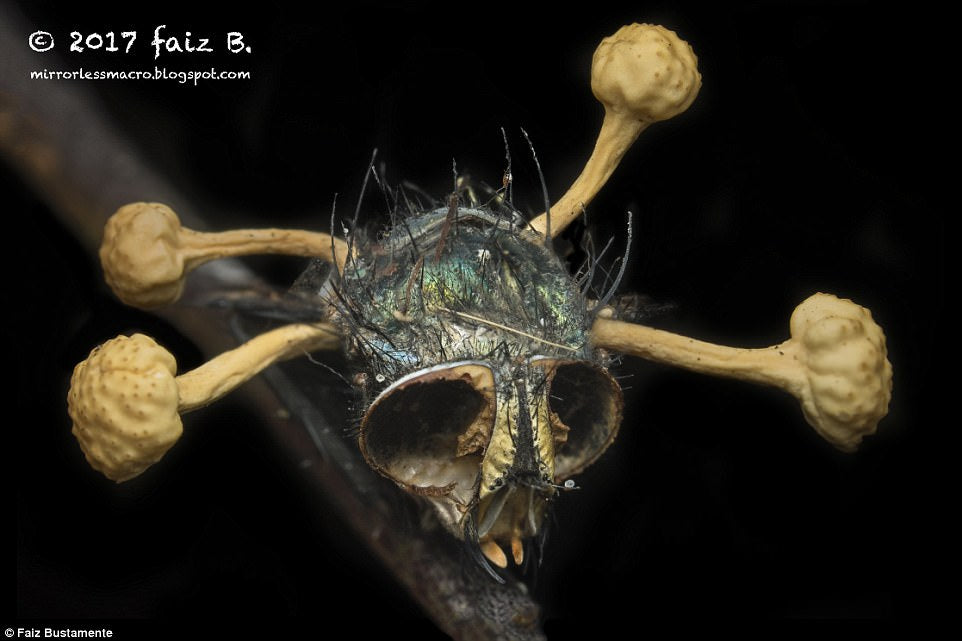
Cordyceps Supplements Provide Many Benefits
Mushrooms grow at many times throughout the year but in the fall is where you will find the majority thriving. Cultivated mushrooms may be available anytime but most wild mushrooms found growing in their natural habitat usually only appear in autumn. Of course there are always exceptions. Edible mushrooms are most often found in forests at the base of trees in the fall and spring while others you can find growing on decomposing wood. The Cordyceps sinesis is quite different and sometimes downright unsettling to some. Cordyceps are unique among their brother and sister mushrooms in the way that they grow on an insect host, listening Steven King and Tim Burton? Yes, very zombie-like if you will, it has been been suggested that in some cases, the relationship between the cordyceps and the insect host can be described as symbiotic because the insect can gain several advantages from the fungus such as being able to thrive thousands of meters higher in elevation than it normally could.
When selecting your cordyceps supplement however, it is not suggested to choose cordyceps cultivated in the wild mainly because of quality control. The quality of mushrooms grown under laboratory conditions is far superior from wild specimens because of the natural chaos of nature, there is no way to predict the nutritional value or ensure a consistency like you can in a laboratory. Being grown in a laboratory setting and on different non-insect substrates has shown not only identical chemical profiles by HPLC analysis, but that they are even seen to be clinically "interchangeable" ‡. Which brings us to the next point of affordability and safety. Wild grown cordyceps are not only more expensive, there is no way to know the safety of their origin or if they are hiding toxic residue from pollution or other chemical. Unfortunately, the term 'Certified Organic' is only as strong as the laws and integrity of the country where it was grown. That is why it is vital to buy USA organic only.
So why are people flocking to the internet stores gobbling up cordyceps?
Anti-aging
Firstly, cordyceps has been used in Asia for hundreds of years as a supplement for anti-aging. Extracts from cordyceps polysaccharides were shown to improve brain function and cardiovascular function so it is believed to make for a great supplement for the elderly.
Athletic performance
The most noteworthy example of cordyceps being used as a athletic performance enhancer was in the early 1990s. Chinese athletes attracted a considerable amount of attention because of their superior performance and the records they were breaking. The athletes were taking cordyceps and other supplements and it showed in their exceptional physical achievements.
Sexual function
Yes please! Besides all of the hub-bub around Cordyceps and how it has many benefits for male sexual hypofunction when taken for a period of time, they have shown in animal studies to have effects on increasing levels of male sex hormones and sperm quality and quantity, as well as anecdotal evidence of possible benefits for female libido as well.
Cancer
Cordyceps makes cancer shake in its boots. Because cordyceps contain a large number of nucleoside analogues like cordycepin that help to induce cell death (apoptosis) many health care practitioners are starting to consider cordyceps to be a very important mushroom in helping improve the cancer patient's treatment outcomes.
Anti-viral
Cordyceps is showing to be a powerful agent for kicking chronic viral infections by it's nucleoside analogues being able to inhibit viral replication and simultaneously modulating the immune response to viral infections via the polysaccharides found in these funky fungus cells.
Image by the inspired photographer Faiz Bustamente
‡ Medicinal value of the caterpillar fungi species of the genus Cordyceps (Fr.) Link (Ascomycetes). A Review. Holliday J, Cleaver M. Int J Med Mushr, 2008;10(3):219–234.